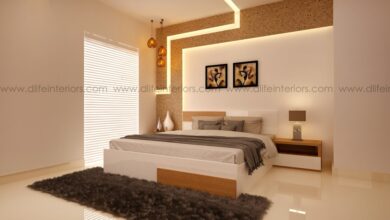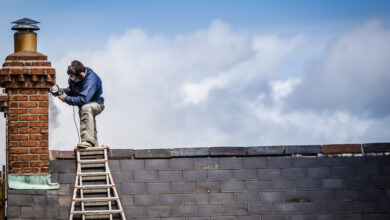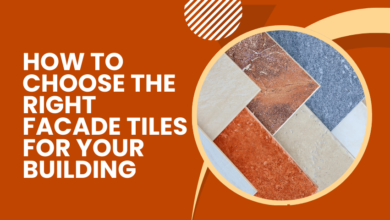The Role of Wood-Plastic Composite in Modern Architecture

The architectural landscape has seen an increase in the search for sustainable building materials, driven by the desire for eco-friendly options that do not sacrifice durability or aesthetic appeal. Wood-Plastic Composite (WPC) is one creative alternative that is gaining popularity.
This composite material combines wood fibers with thermoplastics, making it a versatile and ecological solution for architects and builders alike. Let’s take a closer look at how WPC is transforming current architecture, as well as the benefits and applications.
Benefits of Wood-Plastic Composite
Environmental Sustainability
Unlike traditional wood, Wood-Plastic Composite (WPC) greatly reduces demand for lumber, helping to conserve our irreplaceable forests. This conservation endeavor is critical because it promotes biodiversity, prevents soil erosion, and combats climate change. Furthermore, WPC uses recycled materials, which helps to reduce waste by reusing plastic and wood waste that would otherwise wind up in landfills.
This unique technique not only reduces environmental impact but also promotes the circular economy by encouraging resource reuse and lowering the carbon footprint associated with new material fabrication. As a result, this specific material stands as an environmentally friendly solution for modern construction.
Durability and Longevity
Wood-Plastic Composite (WPC) is known for its great resistance to dampness, insects, and rotting, making it an excellent choice for outdoor applications in a variety of climates. Unlike natural wood, WPC retains its structural integrity without splintering or warping, assuring long-term durability and safety.
This durability enables WPC to survive adverse weather conditions, ranging from heavy rains and humidity to extreme temperatures, without degrading in quality. Furthermore, WPC’s durability necessitates less regular maintenance and replacement, making it a cost-effective and dependable option for decks, patios, fencing, and other outdoor constructions that require long-lasting performance and aesthetic appeal.
Low Maintenance
Compared to traditional wood, Wood-Plastic Composite (WPC) has low maintenance requirements, greatly lowering upkeep labor and expenses. WPC, unlike wood, does not require regular painting, sealing, or staining to retain its beauty and durability. This lack of requirement for periodic treatments results in significant time and cost savings during the material’s lifetime.
Homeowners and property managers may benefit from the aesthetic and practical benefits of WPC without the continuous costs and labor required for wood preservation. WPC’s low-maintenance nature makes it an appealing and practical solution for a variety of applications, including decking, siding, and outdoor furniture.
Versatility in Design
Wood-Plastic Composite (WPC) is well-known for its ability to simulate the appearance of actual wood, creating an authentic, rustic appeal while enabling superior design freedom. Unlike wood, WPC may be easily sculpted, colored, and molded into elaborate forms to suit a variety of architectural styles and tastes.
It allows architects and designers to experiment with new ideas that would be difficult to implement with standard wood. WPC pushes the boundaries of architectural innovation, from personalized textures and patterns to unique structural components, making it a popular material for projects that require both aesthetic appeal and functional versatility.
Applications of Wood-Plastic Composite in Architecture
Decking and Outdoor Structures
Wood-Plastic Composite (WPC) decking boards have become quite popular due to their exceptional durability and aesthetic appeal. These planks are quite popular for building decks, patios, boardwalks, and outdoor furniture. Their capacity to tolerate extreme weather conditions without deterioration guarantees a long-lasting, appealing outdoor space.
Unlike traditional wood, WPC decking does not splinter, fracture, or warp, making it a safer and more comfortable option for outdoor living. Furthermore, the diverse selection of colors and textures available in WPC allows for creative design possibilities, allowing homeowners and designers to obtain the desired look and feel for their outdoor spaces.
Cladding and Siding
Wood-Plastic Composite (WPC) cladding is a sustainable alternative to traditional siding materials, with significant environmental and practical advantages. This unique cladding material is highly weather resistant, shielding structures from the destructive impacts of rain, wind, and UV radiation while providing long-term durability.
Furthermore, WPC cladding improves building thermal performance by offering higher insulation, allowing for more stable inside temperatures and reducing energy usage for heating and cooling. WPC cladding’s low maintenance requirements and ability to simulate various wood finishes make it an appealing alternative for environmentally concerned builders and architects looking for both sustainability and aesthetic appeal in their projects.
Interior Design Elements
This material is appropriate for both indoor and outdoor applications, including flooring, wall panels, and furniture. Its ability to successfully resemble natural wood patterns and colors makes it a popular choice among interior designers who value sustainable materials without sacrificing aesthetic appeal.
WPC’s adaptability enables the construction of elegant, long-lasting interior items that fit effortlessly with a variety of design ideas. Furthermore, its resilience to moisture and wear makes it perfect for high-traffic areas, ensuring long-term use and low maintenance. WPC stands out in modern home design due to its functionality and aesthetic attractiveness.
Infrastructure and Urban Furniture
Street furniture, park seats, and fencing built of Wood-Plastic Composite (WPC) are extremely durable and weather resistant, making them perfect for urban situations. These WPC products can survive extreme weather conditions like heavy rain, direct sunlight, and temperature variations without deterioration. Their durability also makes them resistant to vandalism, lowering maintenance and repair expenses for communities.
WPC’s aesthetic adaptability enables the design of visually appealing urban furniture that merges effortlessly with varied cityscapes. WPC’s durability and low maintenance requirements make it a practical and cost-effective option for improving public places with long-lasting, sustainable infrastructure.
Key Takeaway
Wood-Plastic Composite (WPC) is a significant improvement in sustainable construction materials, providing architects and builders with a balance of environmental responsibility, durability, and design freedom. As the demand for environmentally friendly construction solutions increases, WPC is positioned to play a critical role in determining the future of modern design.
Whether used for decking, cladding, or interior design, WPC exemplifies ingenuity in constructing structures that blend in with nature while achieving modern design standards.



